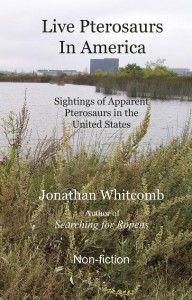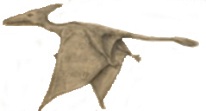What is the biggest problem faced by those who search for living pterosaurs and try to bring their investigations to light? Being attacked by a large ropen—that is not even close to the top of the list. Personal financial sacrifice, as in using personal savings to travel to Papua New Guinea—that is one challenge. The most difficult problem relates to American culture, which is an attitude common in developed countries in general: severe bias against the possibility that one or more species of pterosaur is still living.
A hoax can challenge any serious investigation, whatever is investigated. But one hoax perpetrated by an anonymous person or persons has been especially challenging. Around 2003 or 2004, a web site popped up called “Objective Ministries.” It is now widely believed to be an elaborate hoax. But one page declares much about living pterosaurs, including apparent plans for an expedition in Africa. The “university” named and the persons named now appear to be fictional, part of the joke. The problem for serious researchers and investigators of modern living pterosaurs is this: Some people will be so repulsed by those “objective ministries” pages that they might reject any serious investigation. Tragic!
Another challenge to our investigations is the “tiny minority” position of Wikipedia. This makes any very unusual research or investigation almost impossible to portray in a very positive light on a Wikipedia page. Popular opinions rule on certain web pages and Wikipedia is a good example of that. Of course other wiki’s cover that problem, in particular is this seen on “Creationwiki” (see Pterosaur on their site).
Another problem comes from a few paleontologists who insist dogmatically that fossils, somehow, are evidence that all species of pterosaurs became extinct many millions of years ago. But those critics make no distinction between extinction and near-extinction. And they fail to acknowledge that fossilization is not a common way for a living organism to pass away after death, thereby making a “lack of recent fossils” practically meaningless in the subject of eyewitness accounts of living pterosaurs.
Am I mistake about lack-of-fossils evidence? Then why are there so few pterosaur species that did leave fossils, compared with all the pterosaur species that could have lived during all those supposed millions of years when standard models insist that they lived? No, an apparent lack of “recent fossils” cannot reasonably be used to dismiss eyewitness accounts. To insist that a lack of pterosaur fossils in particular strata is evidence that no species of pterosaur could now live is no more reasonable than insisting that no species of pterosaur could have lived anciently unless we now have a fossil of that species. That kind of faulty reasoning is another problem we face, for educated paleontologists may be assumed to reason reasonably, and sometimes that is far from the case.





 Apparent Rhamphorhynchoid pterosaurs were observed in Cuba, in the mid-20th century
Apparent Rhamphorhynchoid pterosaurs were observed in Cuba, in the mid-20th century